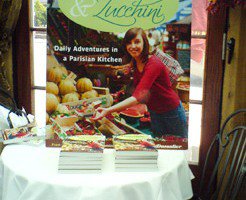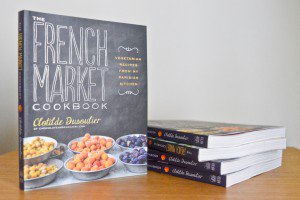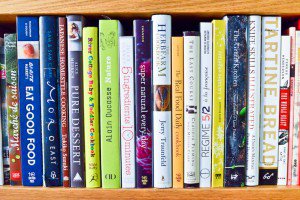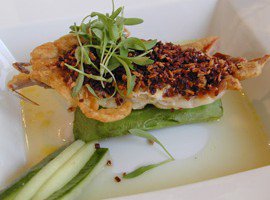
Last time I mentioned my book was two months ago, when I wrote to say I had completed and delivered the manuscript. But what happens once the bird leaves the nest? The process is no doubt different from one publisher to the next and from one book to the next, but what I can offer is a glimpse into what the past few weeks have held for me.
First of all, a bit of waiting for the editor to share an overall impression. In my case, the wait was short, and the overall impression — deep sigh of relief — positive. A couple of weeks later, I received a printed version of the manuscript with my editor’s notes and corrections. I wasn’t too worried about grammar or spelling mistakes, having submitted it to three different and equally trusted readers, but there were a few things here and there. There were suggestions of cuts, too, since the manuscript was running quite long. Total word count isn’t very relevant for a cookbook — the lists of ingredients throw it off — and I knew what the target page count was, but this differs from the word processor page count, when you factor in the final layout of the book and the photography, boxed paragraphs, chapter headers, etc.
Cuts are painful, and I don’t mean just the paper cuts that you get on your fingers from handling the printed manuscript, although these are worth mentioning too. I was just reading Stephen King’s excellent memoir/essay On Writing, and he introduced me to the famous “Kill your darlings” advice. Whoever wrote it first (the quote is variously attributed to Faulkner, Hemingway, and Quiller-Couch) certainly hit the nail on the head, and it does make it a little easier to handle the word processor chainsaw if you can imagine yourself as a character in a horror flick. Or, for those really hard-to-kill darlings, if you think of it not so much as murdering them, but as wrapping them up in tissue paper and storing them in a wooden chest for future use.
But pruning and streamlining are very good things for any piece of writing, and although I don’t think I would have much enjoyed his company at a dinner party, William Strunk Jr. also comes to the rescue with his “Omit needless words” advice — as you can see, I’ve been reading my share of books on the writer’s craft.
What also makes the process easier is that these back-and-forth exchanges take a bit of time, and if you’ve been lucky enough to take a vacation in between, it is easier to take a step back and look at your writing from a (somewhat) fresher perspective — something you are quite unable to do when you are still so engrossed in it you find yourself waking up at night and reciting entire passages in your mind.
Once we reached a consensus on the manuscript, it was sent to the production people, who will take care of the book design, and to the copyeditor, who will check that all my commas are in the right places and that all my words have the correct amount of letters in the right order — I should get sample pages and the copyeditor’s notes in the coming weeks.
In the meantime, there are those little things that start to make the book feel oddly real: the question of sales and publicity, of cover design (a thorny one, that), or of how many blads and bound galleys I would like to order (these are two types of sales/advance review material: a blad is a four-page presentation of the book, a bound galley is the whole book, inexpensively printed).
And before we part, I would like to reveal a little something about the book: the recipes will have wine pairing suggestions, created by my friend Lenn of Lenndevours. A couple of months before the manuscript was due, it suddenly dawned on me that the book wouldn’t be quite complete without a wine component. As I’ve mentioned before, I love wine, I am fascinated by its many dimensions, and I try to learn as much as I can, but I am still a long way from feeling comfortable enough to give wine-buying advice.
There was also the question of location to consider: the book will first come out in North America, and the bottles I have access to through my favorite caviste aren’t necessarily available abroad. This is why I turned to someone who has much more wine expertise than I do, and a good knowledge of the American market. (If and when the book is sold in other countries, we may have to revise the pairings.) I am grateful to Lenn for accepting my offer and coming up with such exciting tasting notes, which I wrote up and wove into the manuscript, learning a good deal in the process. The collaboration couldn’t have gone more smoothly — Lenn is extremely easy to work with, and remained so even when I changed recipes on him at the last minute — and I am particularly pleased to have another blogger on board with me.
Previous installments of the Book Update series:
– Part I: The Book Deal
– Part II: The Recipes
– Part III: Recipe Testing
– Part IV: Food Photography
– Part V: Done!













